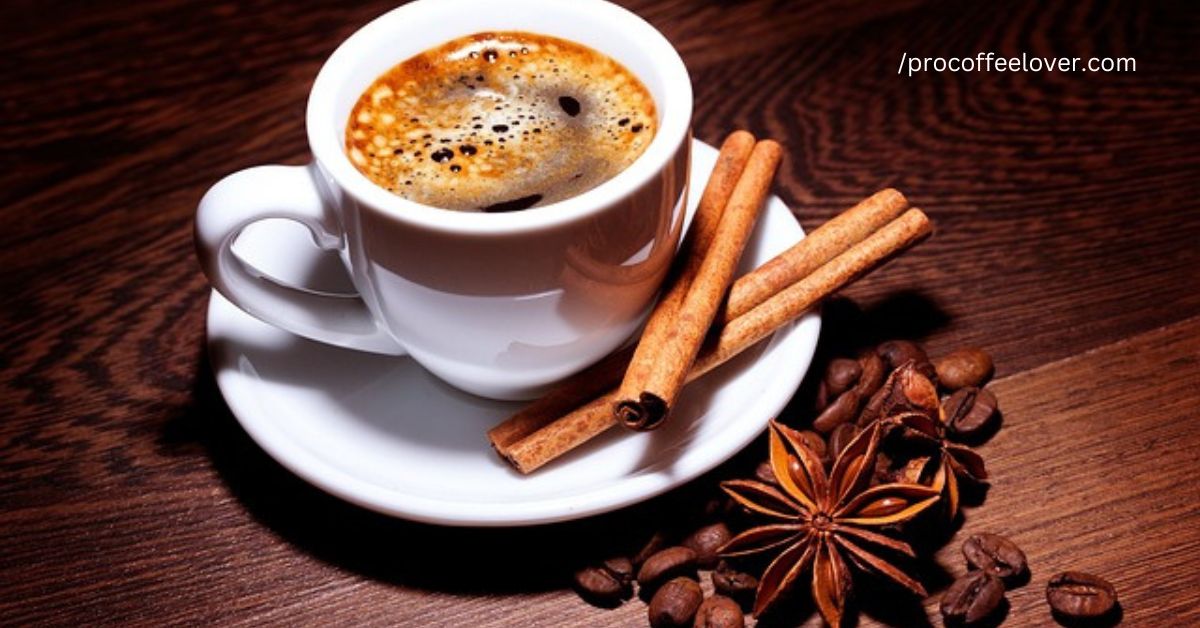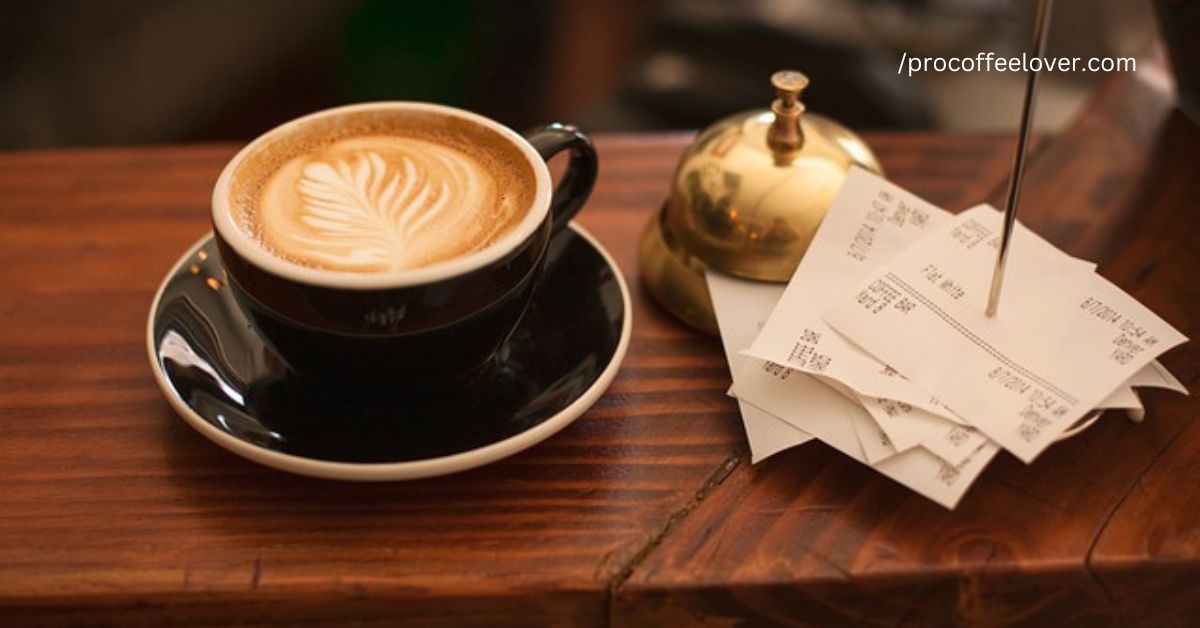Let’s discuss latte vs cappuccino vs macchiato vs Americano. As of my latest training cut-off in September 2021, it appears that you’ve utilized the phrase latte” that I’m unfamiliar with. This phrase or idea may have developed after my previous update. Cappuccino, macchiato, and Americano are the additional coffee drinks that I can yet introduce.
Latte Vs Cappuccino Vs Macchiato Vs Americano which is better

Cappuccino
Equal amounts of espresso, heated milk, and milk foam are used to make a cappuccino. These three components work in perfect harmony to produce a drink that is tasty and well-balanced. Espresso, steamed milk, and milk froth are all combined in equal amounts to make the traditional Italian coffee drink known as a cappuccino.
Latte
A single or double shot of espresso serves as the foundation of every latte. The result is a thick, creamy beverage with a more subdued espresso flavor. This espresso is then mixed with several ounces of heated milk.
Espresso and steamed milk are typically mixed in a ratio of roughly one to two. A layer of froth is then placed on top of the latte.The latter is continuously modified, and by adding flavors like vanilla and hazelnut, it is frequently turned into a sweet variant.
Macchiato
A shot of espresso is combined with a little amount of milk or milk froth to make a macchiato, which has coffee that has been “stained” by the milk component.
By using this method, a distinctive and tasty experience is produced that emphasizes both the potency of the espresso and the smoothness of the milk.Distinct macchiato versions produce somewhat distinct flavor profiles because the espresso is either “stained” with milk or “stained” with the milk.
Coffee lovers who value the interplay of flavors in a condensed and concentrated form frequently choose this technique of preparation because it provides a balanced yet robust coffee experience.
Americano
A few shots of espresso are diluted with hot water to produce an Americano, a stronger and larger coffee drink. You’re on the right track! One or more shots of espresso are diluted with hot water to create an Americano. Compared to a direct shot of espresso, the coffee beverage produced by this dilution technique is bigger and milder.
When American soldiers stationed in Europe diluted espresso to match the milder flavor of the coffee they were used to in the United States, the moniker “Americano” is claimed to have first appeared during World War II.
Due to the addition of water, the Americano offers a smoother and more diluted flavor while retaining the distinctive qualities of espresso, such as its intensity and robust flavor. This makes it a well-liked option for people who want a less potent coffee but still want to experience the distinctive characteristics of espresso.
Also,see more about Coffee Sauce vs Syrup
History And Origins

Discovery In Ethiopia
It is commonly said that ancient Ethiopia, and more specifically the Kaffa region, is where coffee was first discovered. Yes, indeed, the discovery of coffee is frequently credited to ancient Ethiopia, specifically the Kaffa region.
Ethiopian history and culture now include the tale of coffee’s discovery. The discovery is said to include a goat herder by the name of Kaldi. When his goats consumed the crimson berries from a certain plant in the ninth century, Kaldi observed that they became especially animated and animated.
He chose to taste the berries for himself out of curiosity regarding this phenomenon. Having eaten the berries, Kaldi also felt a surge of energy. He told a local monk about his discoveries, and the monk utilized the berries to make a beverage that kept him awake for extended periods of prayer and meditation.
As word of this finding spread to other monks and the general populace, coffee was finally grown and consumed. Over time, the knowledge of coffee spread throughout the world and beyond Ethiopia’s borders, eventually spawning the current global coffee culture.
Spread To The Arabian Peninsula
This revitalizing plant was introduced to the Arabian Peninsula from Ethiopia. By the fourteenth century, Yemen was a coffee-drinking country. Without a doubt, Ethiopians brought their love of coffee to the Arabian Peninsula, especially Yemen.
In the early development of coffee and its cultivation, Yemen was crucial. A crucial stage in the development of the coffee trade and culture was the movement of coffee from Ethiopia to Yemen.
Yemeni civilization and culture had incorporated coffee as an essential element by the 15th century. Mocha (Makha), a city in Yemen, rose to prominence as a major hub for the trading of coffee. The knowledge of coffee was further spread throughout the region, including to other parts of the Arabian Peninsula and beyond, thanks in large part to Yemeni traders and merchants.
Due to its stimulating qualities and its significance in various social and cultural practices, coffee’s popularity expanded quickly throughout the Arabian Peninsula. It evolved into a typical beverage enjoyed at get-togethers, talks, and cultural events.
The coffee beans traded through the Yemeni port of Mocha also bore the moniker “Mocha coffee,” which was a reference to the beverage.
Coffee’s Ascent In Europe
Coffee made its way to Europe through colonial expansion and commercial networks. Indeed, colonial expansion, trade networks, and cultural contacts were responsible for the introduction of coffee to Europe.
The naval activity of European colonial powers and the growing connectivity of international trade lines were the main forces behind the spread of coffee to Europe. The early commerce of coffee was significantly influenced by the city of Venice.
One of the first groups of traders to bring coffee into Europe was from Venice. Trade with the Ottoman Empire, which at the time ruled several coffee-producing regions, brought coffee to Venice.
Initially, coffee was only drunk as a beverage in homes or by people, but as “penny universities” sprang up in cities like Venice, London, and Paris, they became hubs for social contact, intellectual discourse, and intellectual exchange. Coffeehouses developed into centers for knowledge exchange and had a big impact on the culture and society of Europe.
Coffee And The Ottoman Empire

Similar increases in coffee’s popularity occurred in the Ottoman Empire during this period. Yemen and other countries in the Arabian Peninsula were used as commerce and diplomatic routes to bring coffee to the Ottoman Empire.
The energizing qualities and social components of coffee were well-liked in Ottoman society. In the Ottoman Empire, coffee shops developed into significant social hubs, just like in Europe.
These facilities, called “Yahweh khaneh” in Turkish, served as meeting places where people could have coffee, have conversations, and take part in other sorts of entertainment.
Along with being a preferred beverage, coffee played a crucial role in Ottoman hospitality. Giving guests coffee became a sign of goodwill and a way to foster relationships.Also, see more about Caribou Coffee Vs Starbucks
Coffee Plantations And Colonization
As they established colonies around the globe, European colonizers introduced coffee growing to new regions. Indeed, the expansion of coffee cultivation around the globe was greatly aided by European colonization.
Coffee growing was introduced and encouraged in the places where European powers created colonies. The local economies, societies, and ecosystems were significantly impacted by this increase in coffee cultivation.
Dutch, French, Portuguese, Spanish, and British colonial powers built colonies in a variety of climes and topographies throughout the world. To maximize coffee production and earnings, plantation methods were developed. This resulted in the exploitation and forcible eviction of the local community.
Creating The Perfect Drink

A careful eye for detail, high-quality ingredients, and a harmony between the espresso and milk components are necessary to make the ideal latte or cappuccino.
Perfect Latte:
Espresso:
Use freshly ground coffee to brew a potent shot of espresso.
Steaming milk:
Milk should be steamed until it has a creamy, velvety texture. The latte’s creaminess is improved by properly steaming the milk.
Espresso to Milk Ratio:
A traditional latte contains more milk than espresso. Use around 2/3 milk and 1/3 espresso typically. This results in a well-balanced drink, with the milk’s flavors enhancing those of the coffee.
Layering:
Using a slow pour, gradually add the hot milk to the espresso. This slows down the mixing process and makes for a stunning visual display.
Latte Art (Optional):
If you’re talented, you can decorate the milk foam with latte art. This action improves the overall experience and adds a creative element.
Perfect Cappuccino
Espresso:
Start with a shot that has been properly made. A tasty cappuccino depends heavily on the strength and caliber of the espresso.
Milk Steaming:
Milk is steamed to produce a dense, heavy milk froth. The foam’s creamy quality is due to the milk’s ability to produce microbubbles when it is properly aerated.
Pouring Method:
Pour the espresso into the cup first. Then, when you pour the steaming milk, hold back the milk foam with a spoon. Finally, top with a spoonful of milk foam.
Presentation:
The froth on top of the beverage should be thick enough to maintain its shape. A properly made cappuccino will have a robust coffee flavor that blends well with the milk foam.
Presentation:
The froth on top of the beverage should be thick enough to maintain its shape. A properly made cappuccino will have a robust coffee flavor that blends well with the milk foam.
Equal Parts:
Espresso, steamed milk, and milk foam are all equal components in a typical cappuccino. This proportion enables the creamy milk components to counterbalance the intense coffee flavor.
Popular Variations
Variations On lattes:
Espresso mocha: A rich and slightly sweet chocolate-coffee flavor can be achieved by adding chocolate syrup or cocoa powder to a latte.
Vanilla coffee:
For a sweet and fragrant twist, add vanilla syrup or extract to your latte.
Caffe Caramel:
For a latte with a smooth, buttery caramel flavor, add caramel syrup.
Caffe Hazelnut:
For a nutty and fragrant flavor, add hazelnut syrup to a latte.
Variations Of cappuccino
Driest cappuccino: A cappuccino will have a more prominent foam texture if the milk foam is increased but the amount of steamed milk is decreased.
Cappuccino Wet: Compared to a conventional cappuccino, use more heated milk and less foam. This variant features a softer foam layer and a creamier texture.
Aromatic Cappuccino: Similar to flavored lattes, you can change the flavor of a cappuccino by adding syrups like vanilla, caramel, or hazelnut.
Various Macchiato flavors
Espresso with caramel:
This popular choice offers a combination of coffee and sweetness by combining espresso with steamed milk and a dab of caramel sauce.
vanilla latte:
An espresso macchiato is enhanced with vanilla syrup to offer a hint of sweetness and scent.
Iced Macchiato:
This light take on the traditional macchiato is made by combining cold milk and espresso with ice.
Various Americanos
Americano on ice:
The traditional Americano is made cooler and diluted by the addition of cold water to espresso and ice.
A caramel latte:
For a lightly sweet flavor, an Americano can be enhanced with a shot of caramel syrup.
Espresso Americano:
You may make an Americano chocolate-infused by adding chocolate syrup or cocoa powder.
Customization And Flavor Profiles
Latte
Additions of flavor:
To improve the flavor of the latte, try adding spices like cinnamon or nutmeg or experimenting with extracts like vanilla, almond, or coconut.
Temperature:
Depending on your desire, you can warm up or cool down the milk temperature to make a latte.
Milk Option:
To alter the smoothness and flavor of the beverage, try it with several types of milk, including full, skim, almond, oat, or soy.
Sweeteners:
White sugar, brown sugar, honey, agave syrup, or flavored syrups (vanilla, caramel, or hazelnut) are all alternatives for adjusting sweetness.
Cappuccino
The texture of foam:
By altering the milk steaming procedure, you can change the foam’s texture. Foam that is creamier or denser will have a different mouthfeel.
Dusting With Cinnamon Or Cocoa:
For an additional layer of flavor, sprinkle cocoa powder or ground cinnamon on top of the foam.
Sweet Supplements:
Before adding the milk and foam, adjust the espresso’s sweetness by stirring in syrups or flavored sugars.
Macchiatos
Coffee Strength:
A bold espresso will have a stronger flavor; a mild one will have a softer one.
To improve the flavor of the macchiato, experiment with spreading caramel, chocolate, or flavored syrups over the beverage.
Milk Option:
To add distinctive flavors, experiment with various milk substitutes for the macchiato’s milk component.
Americano
Strength:
To make a stronger or milder Americano, change the number of espresso shots used.
Temperature:
By utilizing hotter or colder water, you can alter the temperature of the beverage.
Syrups:
Syrups with flavors can be added to create new taste aspects.
Orange Zest:
For a refreshing twist, think about including a twist of lemon or orange zest.
Spices:
For more flavor, add cardamom, cinnamon, or nutmeg to the Americano.
Summary
Finally we learned latte vs cappuccino vs macchiato vs Americano . There is a wide variety of coffee available to suit every taste and inclination. The smoothness and adaptability of lattes make them appealing. Equal parts espresso, steaming milk, and rich milk foam make this a bolder option.
A robust flavor is produced by the strong, robust coffee flavor of a cappuccino and the creamy froth that tops it off.The macchiato seeks a balance between coffee power and mild milk influence by providing a robust espresso foundation that has been “marked” with a hint of milk or milk foam.
Aless heavy option that creates a gentler coffee flavor by diluting espresso with lukewarm water. While providing a smoother flavor than espresso, americano keeps certain espresso qualities.
Each of these beverages has its personality and may be further personalized using various milk options, sweeteners, flavorings, and methods like latte art. The secret is to explore, experiment, and enjoy the many options that the coffee market has to offer.
There is a perfect cup of coffee for any taste thanks to the selection of latte, cappuccino, macchiato, and americano, whether you’re looking for a cozy and creamy experience, a powerful and intense coffee flavor, or something in between.
